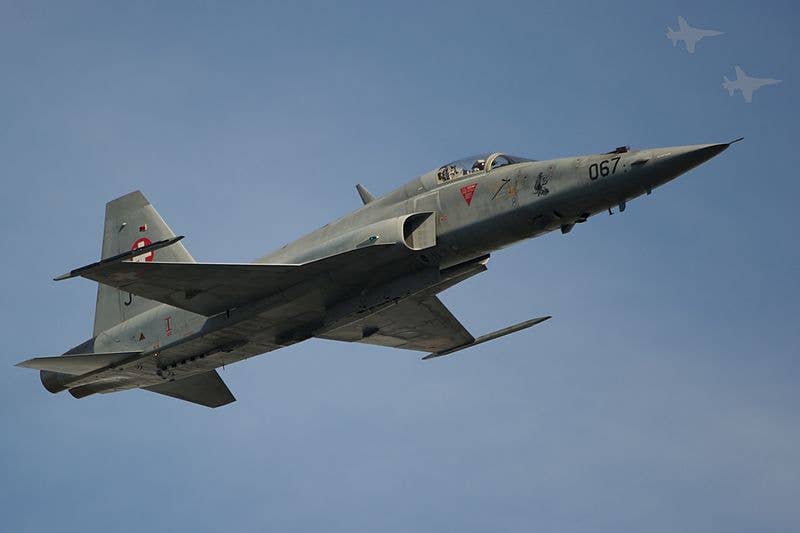Marines Buy 22 F-5s From Switzerland
The U.S. Marine Corps’ latest airplane acquisition is a supersonic interceptor that first flew off the drawing board 65 years ago. The Marines are buying 22 Northrop F-5 Tigers from…

Peter Gronemann, Wikipedia Commons
The U.S. Marine Corps' latest airplane acquisition is a supersonic interceptor that first flew off the drawing board 65 years ago. The Marines are buying 22 Northrop F-5 Tigers from the Swiss air force. The first one was loaded on a C-130 on March 18 for the trip back to the U.S. where it will live out the rest of its service life as an adversarial training aircraft along with the others in the sale. The Marines paid a little less than $1.5 million each for the Cold War speedsters, which are still being used by 17 countries and have been retired by 21 others. More than 2,500 were built.
Switzerland got its F-5s in the 1970s and 1980s and has flown them ever since. It sold some to the U.S. Navy for its adversarial program and even with the Marines sale it will keep 25 Tigers for training, targets and test flights and to supply the jets for the Swiss air force's air demonstration team, the Patrouille Suisse. It's not clear where the Marines will base their new acquisitions.






